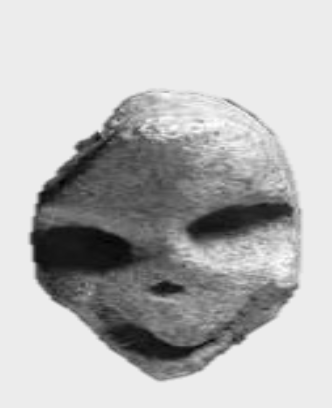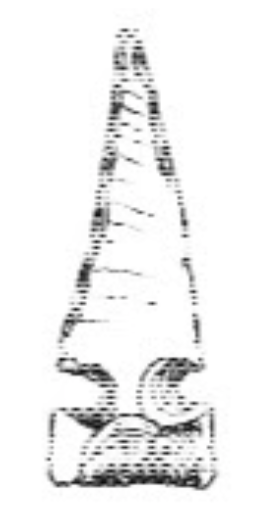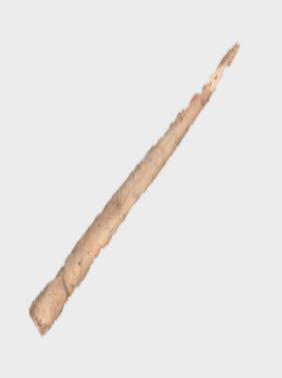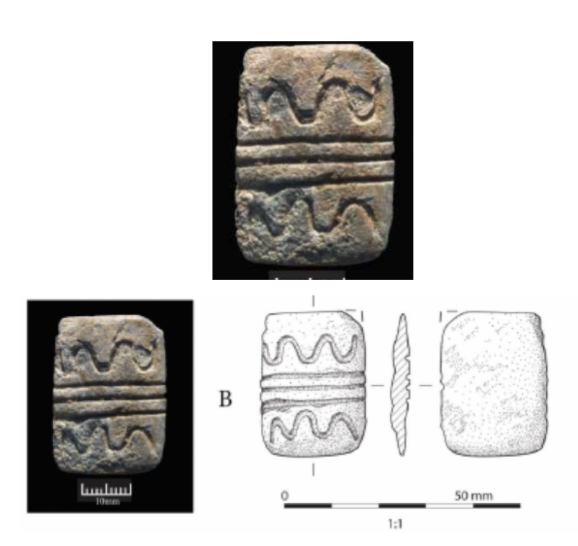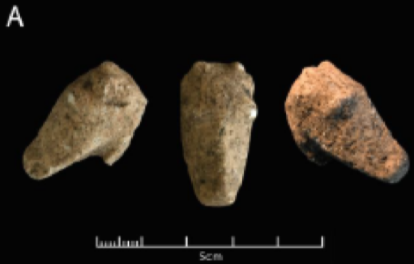About Faynan Heritage Home
Faynan Heritage Home is part of the Faynan Heritage Women Cultural Association of Southern Jordan (FHWCA). It offers handmade products created and managed by the women of Faynan and Greigra. They are inspired by ancient Neolithic objects from Faynan, dating to between 12,000 and 10,000 years old, including some of the oldest art found in Jordan. The products help maintain traditional skills and raise awareness about Faynan’s ancient heritage so that it can be protected for all to enjoy.
Funds from the sale of these products support the livelihoods of the women and their families in Faynan and Greigra.
Additional products will be offered for sale very soon!
Our Logo
Our logo is inspired from Faynan heritage! Around 11,000 years ago, a piece of bone was cut and polished into a rectangle and then decorated with a wavy line and circles. Whoever made it lived at the Wadi Faynan 16 Neolithic settlement, soon after the end of the last ice age. The line looks like water flowing along the now dry river bed, and the circles might the trees that had once grown in the wadi. The design also has a striking resemblance to the trail left by a lizard when walking across the sand, the circles its footprints and the curvy line the drag of its tail.
Our products inspired from Faynan Heritage!
Stone artefact that was likely a pendant, made from shell. We think it is based on the shape of a bird in flight, perhaps an eagle. The Neolithic people of Faynan were keenly interested in birds of prey. They were caught and either skinned or had their wings and feathers removed, probably to be used in costumes on ceremonial occasions. The Neolithic people also made and wore a wide range of beads and pendants, made from stone, shell and bone.
Small stone carving of a stone face was made around 11,000 years ago by the Neolithic people of Faynan. It is double sided, with a smiling face and large round eyes on both sides. We have no idea whether this was made as a toy for children, a piece of jewellery or a magical amulet.
Small stone points that were made by Neolithic people throughout Jordan and further afield. They had two notches in the base to enable hafting. While some were used as arrow heads for hunting wild goats, others were used a drill points and piercers for working reeds and hides.
Lying on the floor of a dwelling at the Neolithic settlement of WF16 in Faynan was a beautiful, polished stone batôn, 30cm in length and creamy white in colour. This would have taken many hours to make and must have been a highly precious object. We suspect it was held on ceremonial occasions as a symbol of high status and authority
When archaeologists excavated the 11,000 year old Wadi Faynan 16 Neolithic settlement, they found a large oval building. It was divided into two with partitions on either side. They also found a small stone plaque which seems to carry the floor plan of that budling. Was this the Neolithic architect’s plan?
The Neolithic people liked to decorate small plaques of stone. These may have been worn as ornaments or given as gifts to family, friends, and visitors. The designs are often intricate and must have had meaning for the Neolithic people. We think this plaque depicts water flowing along the Wadi Faynan, sometimes in a torrent and sometimes meandering. Water was a crucial resource not only for drinking and enabling plants to grow and animals to thrive for their hunting and gathering, but also for making the mud walls and floors of their dwellings.
Is this the head of a gazelle or a dog? It was carved in stone at around 11,000 years ago during the Neolithic in Faynan. Dogs were domesticated from wolves during the ice age and would have been companions to the Neolithic people in Faynan, perhaps used for hunting. Maybe this is the carving of a much loved pet. Or maybe it is the head of a gazelle, one of the animals that were once common in Jordan and hunted during the Neolithic period.



